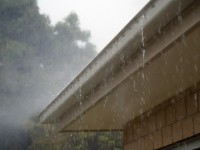Concrete drywall, slabs, basement floor or outdoors concrete often develop cracks. In some cases, you have no need to worry about, but you can improve the appearance of your house and make the concrete more durable.
An easy repair of concrete cracks could be conducted by everyone. In this article, HireRush.com offers you a simple guide on that.
So, as you may already cleared out, in time there will be emerging holes and splits in your concrete. Sometimes this process doesn’t depend on the maintaining.
For instance, you can keep the concrete clean and take care of it in a proper manner. However, in cold joints your concrete will develop cracks almost inevitably.
And you can do nothing to prevent it. It relates to places, where two slabs meet. As the concrete slabs were poured one after another, in the course of time you will see cracks over there.
Concrete is basically composed of cement, sand, water and gravel. And it’s natural for water to evaporate.
Meanwhile, other components cure and create a slab. Especially when the house or the soil beneath the concrete gives under, cracks become even larger.
More probably they won’t affect badly the structural toughness of the building. Nevertheless, it can have other negative effects.
Such cracks open space for underground water, and insects. Besides, they provide entry for radon that can be harmful.
You can see yourself the importance of fixing cracks in concrete. Look over our instructions below. They will help you to succeed.
At the same time, before starting the project, make sure you don’t deal with huge cracks that constantly occur from time to time.
In this event, you should better hire a pro. Only specialists can resolve this problem, as it may speak for more serious damages.
To contact your local expert just submit an application including the task. Click the button below and find a suitable pro right now.Leave your request here
For small cracks follow our step-by-step instructions that will enable you to complete this do-it-yourself project. Read on the guide and fix the cracks readily.
4 Steps to fixing a crack in concrete
-
Clean the cracks
First step is to prepare the crack to repairing. To start with, clean it with brush or using a vacuum cleaner.
Your task is to remove all debris and dirt out of the crack. Make sure you cleaned out all particles that can hinder you. -
Widen the crack
Next task is to extend the initial size of the crack. It will help patching products to penetrate deeper in concrete and bond with it.
To widen the crack take a chisel and a hummer. Punch the chisel in keeping it at an angle.You will do it for creating a bigger hole in the bottom of the crack. While on top of it the crack remains narrower.
Alternatively, make use of a circular saw to make a groove.
At the end of this phase you have to sweep the dust and dirt again with a broom. Do it carefully to ensure you removed all debris. -
Apply concrete crack repair kit
In certain situations some patching products can effectively cope with the crack. Yet, most of them often fail in the long term outlook.
Concrete contractors advice buying a concrete repair kit instead of filling the crack with a silicone caulk that will only do a superficial work for you.
The same could be said about the hydraulic cement. Many experts warn that it bonds badly with concrete and moreover, is rigid that is undesirable.If you use patching filler, follow the manufacturer’s directions. Before filling it in the crack make sure the surface is dry and clean.
Apply the filler carefully and spread it smoothly and evenly. Then, let it tighten and add more if needed.
Allow it dry (usually takes a night, but can vary depending on the product you use and its manufacturer’s directions).
When concrete patching settled and enough time has passed, check whether the crack needs the additional portion. -
Seal the concrete
When you finished patching the concrete, it’s time to take care of sealing it. Thus, you will insure the concrete from absorbing moisture.
Today there are plenty of different sealants available in stores. We recommend you to choose polyurethane that is based on water.
Cover it once, than wait a few hours and apply the next coat.Water-based polyurethane dries out quickly that gives you the opportunity to save time and not wait too much.
If fixing a crack in concrete floor, you can also use resurfacing mixture. Spread it evenly with the help of squeegee.
As you see, repairing a crack in concrete is not a big deal in fact. So, if you are sure you have small cracks and nothing serious, go ahead confidently.
To fix a crack you may spend a day, but in the meantime, save some money.






I have a crack in my patio. It does not look like a serious issue to me. However, I was unaware it could cause damage from water or radon. I will call someone out here to repair it for me.
This is some interesting advice, I wouldn’t have thought to widen the crack in order to fill it. It does make sense though, considering that you might need the extra space to get the repair tools inside. Still, I think I would rather trust this kind of a repair to a professional since they can probably make it look much nicer than I could.
I had no idea that it was such an intense process to replace cracks. My husband said that he wanted to fix some areas on our sidewalk and driveway, but I think we’ll need to hire a professional. Thanks for showing the kit that we would need and going into detail on how to apply it onto the cracks, so we knew that we needed to reach out to a contractor.
Great DIY crack repair kit.
Thank you!
This article really hit home for me. When I bought my house, I noticed a few minor cracks in the concrete but didn’t think much of it. A year later, those cracks had grown, and I started seeing signs of water damage and even a few pests. Fixing those cracks was more complicated than I expected, but following a detailed guide like this one made it manageable. Cleaning, widening, and using the right repair kit were key steps. I highly recommend tackling these repairs early to avoid bigger problems later!